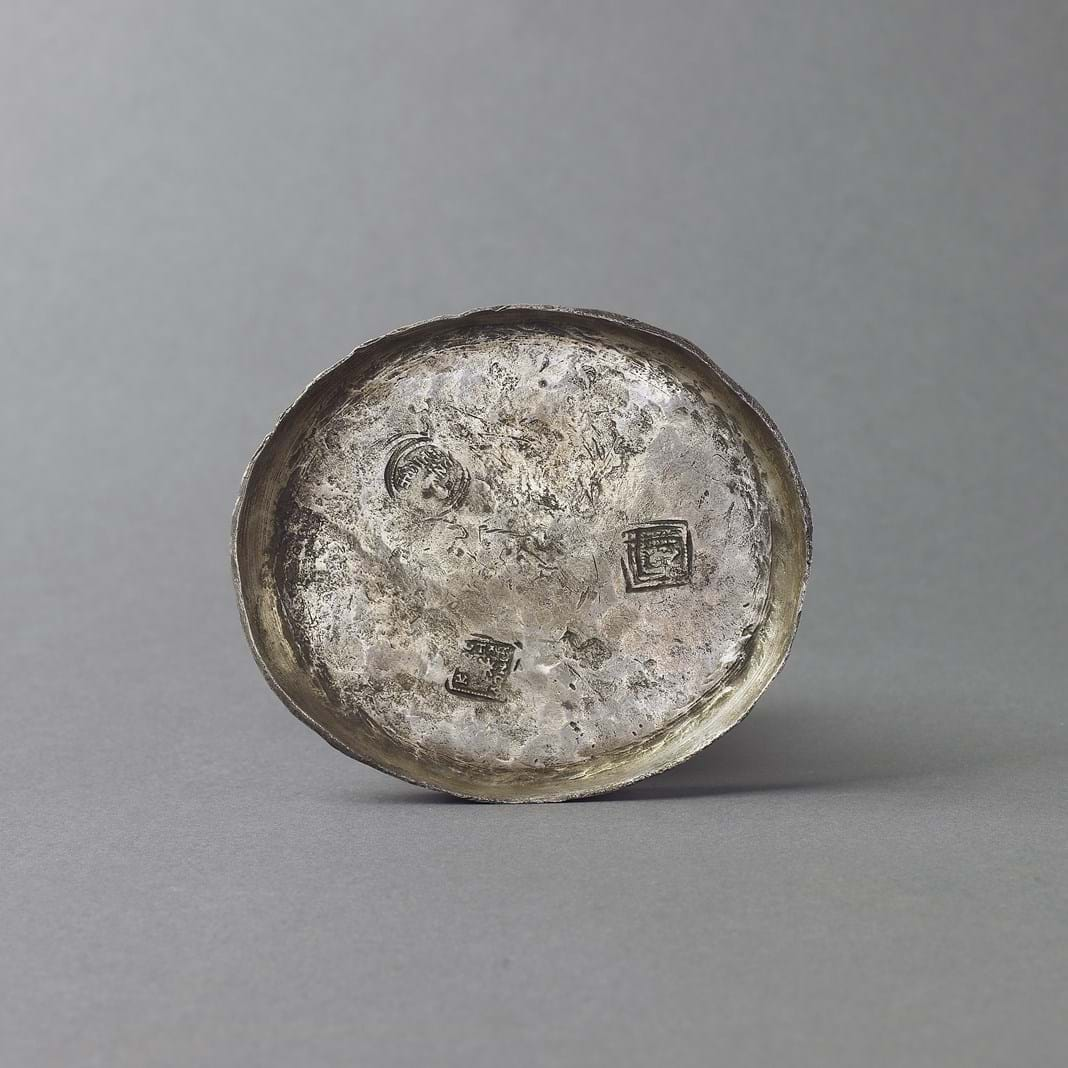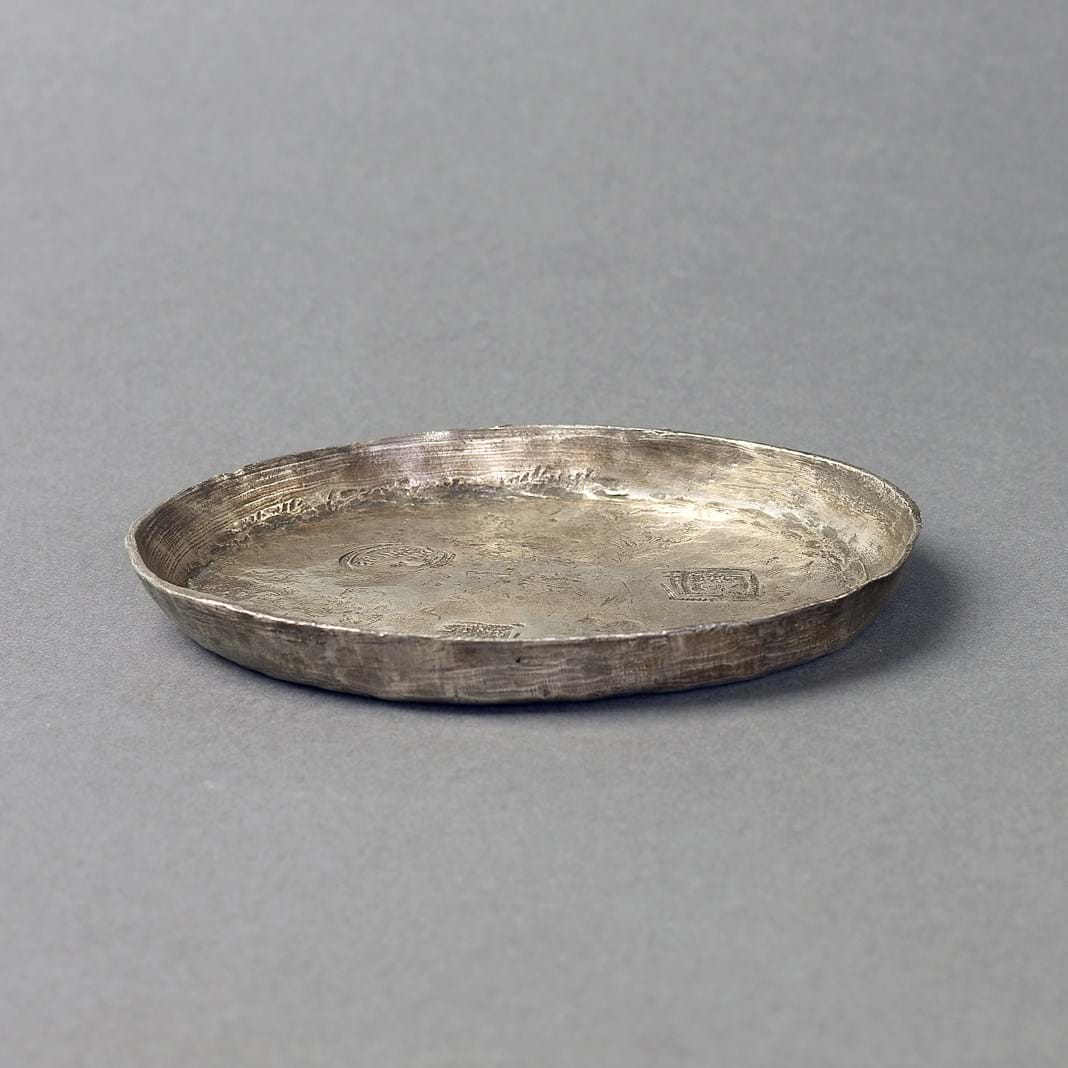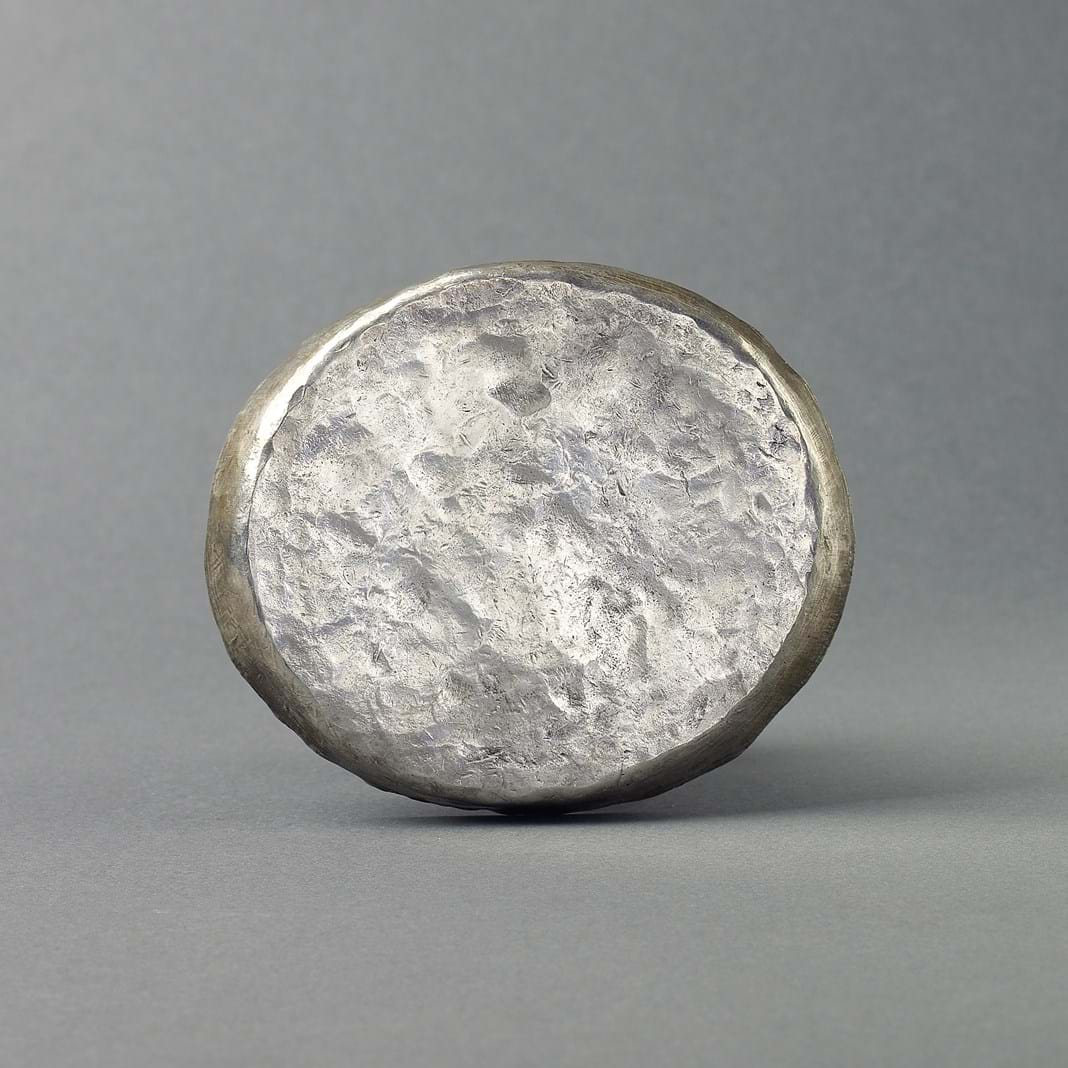Byzantine dish-shaped silver ingot
Roughly chiselled and hammered into the shape of a shallow oval dish, this piece of silver bullion bears three control stamps; one round and two rectangular.
Comments
The stamps on this piece are markedly different from those found on objects from Constantinople, indicating that the object originated from another centre of the Byzantine empire.
One of the three stamps bears a portrait showing an emperor without a halo. Comparing it to the tables in ECD (Erica Cruikshank Dodd, Byzantine Silver Stamps, Dumbarton Oaks Studies Seven, Washington DC, 1961), he must be either Heraclius (r. 613 – 641 AD), or Constans II (r. 641 – 651/2 AD)
This dating to the 7th century is corroborated by the two names on the other stamps:
SERGIUS—in Latin. See ECD Nos. 71 – 73 from Heraclius’ reign, and Nos. 75 – 77 from the reign of Constans II
KONSTANTINOS—in Greek. See ECD No. 96 (stamped in Latin) also dated to the 7th century
As to the origin of this silver ingot, we can exclude the Empire’s South, since by the 7th century the Byzantines had lost control of its great centres of population and commerce. And given that the piece is said to have been found on the north coast of the Black Sea, the most likely origin for it would have been Cherson, a thriving commercial centre with the administrative capability for the assaying of silver. This tentative attribution is reinforced by the fact that a number of items found in that general region bear stamps with a rosette or Christogram. The star on one of the three stamps on this piece could perhaps be a simplified form of these.
Origin
Northern coast of the Black sea, modern Ukraine
Date
7th century AD
Height: 11.5 cm
Width: 13.5 cm
Weight: 310 g, i.e., almost a full Byzantine lb (324-319g)
Provenance
TS Collection, London
£ 8,750


